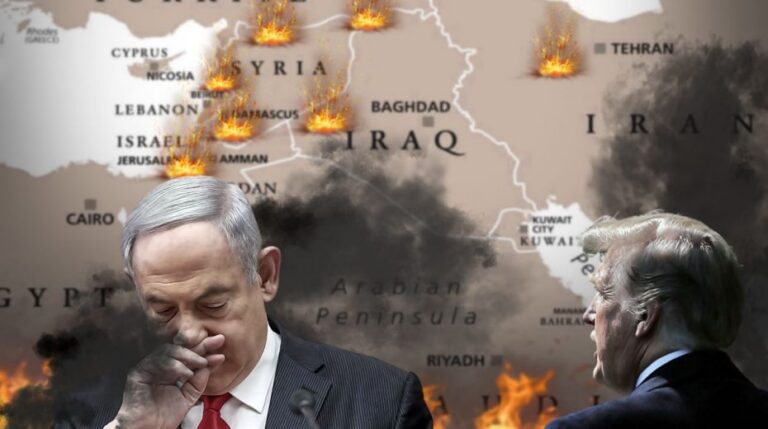
Alastair Crooke writes that Putin continues to focus on establishing a new security framework encompassing all of Europe.
Trump’s efforts to initiate a ‘Budapest scenario’—a summit between Putin and himself based on the prior Alaska ‘understanding’—were unilaterally called off by the U.S. amid tensions. Putin had started the 2.5-hour call on Monday, in which he reportedly confronted the U.S. over its failure to prepare a political framework, not only concerning Ukraine but also Russia’s broader security concerns.
Yet, when the proposal was publicly disclosed by the American side, Trump had reverted once again to the Keith Kellogg doctrine—a ‘frozen conflict’ on the existing Contact Line before any peace talks occur, rather than afterward.
Trump must have been aware long before the Budapest talks surfaced that Moscow consistently rejected the Kellogg approach. So, why persist with this demand? Ultimately, the summit plan was scrapped after a preparatory call between Foreign Minister Sergey Lavrov and Secretary of State Marco Rubio foundered. Lavrov stood firm that a Kellogg-style ceasefire was unacceptable.
It appears the U.S. Administration assumed that the threat of supplying Ukraine with Tomahawk missiles—coupled with increasingly aggressive rhetoric about deep strikes into Russia—would coerce Putin into accepting a freeze immediately, delaying any substantive discussions or wider solutions sine die.
Russian military advisors reportedly informed Putin that Trump’s threats were bluffs; even if Tomahawks were delivered, their limited numbers would not yield any tactical or strategic loss for Russia.
The unfolding events suggest either Trump failed to grasp this Russian stance despite repeated messages that Russia rejects a ‘here and now’ freeze, or ‘dark money’ forces pressured him to halt any genuine peace efforts with Russia. Consequently, Trump abandoned the plan, dismissing the Budapest meeting as “a waste of time,” while his Administration (including U.S. Treasury Secretary Bessent) rolled out new sanctions targeting Russia’s largest oil firms and called on allies to follow suit.
It’s important to understand the ‘Russian’ perspective: Putin is determined to avoid repeating the mistake of 1918, when Russia agreed to the humiliating Brest-Litovsk peace under German pressure. He often emphasizes that yielding to “let’s just stop” demands then cost Russia its major power status and devastated generations. The massive sacrifices of millions were exchanged for the shameful Brest-Litovsk treaty, which led to chaos and collapse.
Despite Trump’s unpredictability and hidden pressures, Putin remains committed to building a new Europe-wide security structure. However, many Russian ‘red lines’ have been crossed, angering him and suggesting escalation—potentially unprecedented—is imminent.
Even after the Belgrade meeting’s cancellation, Europeans are pushing a ‘new/old’ twelve-point plan that rejects territorial concessions and calls for a ceasefire along current front lines. Western elites openly declare their objective: Russia must be defeated. Escalation is underway with new EU sanctions on Russian gas imports and overnight attacks on oil refineries in Hungary and Romania (a NATO member). The message to EU states is unmistakable: no retreat. Polish Prime Minister Donald Tusk underscored this on X: “All Russian targets in the EU are legitimate.” The EU appears ready to take extreme measures against its own to ensure compliance.
Given Kiev’s unwillingness to relinquish any territory and Russia’s overwhelming military advantage, meaningful negotiations seem unlikely at present. The resolution of Ukraine is probably going to be decided by force. The EU’s urgency in courting Trump’s support likely reflects anxiety over Russia’s mounting military successes.
This turmoil in Russia coincides with Bessent’s trip to Kuala Lumpur to confront China’s reaction to the U.S.’s abrupt expansion of export controls on tech products, following seemingly positive trade discussions. China retaliated with rare earth controls.
Trump responded angrily, threatening 100% tariffs on China. The U.S. stock market initially dropped but quickly rebounded as Trump posted optimistic statements just before the futures market opened, driving stocks to record highs. Americans were reassured.
However, last Monday Trump unexpectedly intensified his positive tone toward China, stating, “I think when we finish our meetings in South Korea [with Xi], China and I will have a really fair and really great trade deal together.” He expressed hope China would resume buying American soybeans after a sharp decline during the tariff dispute, and urged China “to stop with the fentanyl,” accusing Beijing of not curbing the export of synthetic opioids and chemical precursors.
To boost the stock market even further, Trump added he did not believe ‘China wants to invade Taiwan’.
Now that Moscow has effectively blocked the U.S. ‘Budapest’ plan, the question arises: Will Xi also decide that tolerating Trump’s unpredictability is worth the inevitable tensions? The scheduled South Korea meeting remains uncertain. Such tension is expected to rise.
Alternatively, Trump’s markedly positive rhetoric regarding China might hint at a surprising development for the U.S. and himself.
Newly appointed Japanese Prime Minister Sanae Takaishi was widely anticipated to adopt a firm anti-China stance, bolster the U.S. alliance, enhance Japan’s military capabilities, and contain Beijing.
Instead, she deviated sharply from expectations.
In her inaugural address, Takaishi declared she would not back the U.S. trade war against China nor become a tool of U.S. economic pressure. She openly criticized Trump’s tariff policies as “the most dangerous mistake of the 21st century.”
Reuters noted this stance was a surprise in Washington. Since taking office, Takaishi reportedly held meetings with Japan’s largest firms, who united in delivering an urgent message: Japan’s economy cannot afford another trade war.
Just a week into her term, she openly supported China, marking the most significant foreign policy shift in Japan since WWII. China was no longer considered an adversary.
A new chapter in Asian geopolitics has begun. Trump was stunned, accusing Takaishi of betraying free trade principles; CNN described her move as a ‘stab in the back’ from a close ally.
Even more striking: polls showed the Prime Minister’s economic independence policy had 60% approval, with more than half of respondents endorsing her China policy.
Bloomberg revealed another bombshell: Takaishi has initiated, in coordination with China and South Korea, a strategic overhaul of Asia’s monetary framework responding to Washington’s increasing use of economic coercion. The three countries are creating a joint currency zone with a trilateral swap mechanism enabling trade settlement, liquidity extension, and crisis management independently from Western influence.
If successful, this project would reduce dollar dominance by shifting 15% of global trade outside the dollar system, potentially triggering the collapse of the existing pro-Western Asian power balance.
Moreover, Takaishi’s vision aligns with the SCO/BRICS plan to expand its digital clearing system throughout Central Asia. However, Trump aims to dismantle BRICS and any other threats to dollar supremacy, signaling more tariff threats to come.
If China fails to respond warmly to Trump’s charm offensive, tensions could escalate alongside conflicts with Russia, Venezuela, and possibly Iran. Although Trump has threatened sanctions against Japan, this is likely to push Japan closer to China, given Japan’s current dominant trade relations. The future portends volatility, marked by turbulent swings in financial markets.
Russia and China remain closely coordinated on geopolitical matters and may continue engaging with Trump to avoid inadvertently triggering a Western financial crisis for which they would be blamed, or for military deconfliction. Nevertheless, Trump’s pressure tactics seem to be backfiring as the U.S. faces a deepening debt and credit crisis.
Any of these geopolitical flashpoints—Ukraine-Russia, Venezuela, Iran, Syria, Lebanon, Pakistan-India, and especially Gaza and the West Bank—could ignite conflict. The situation is extremely fragile; Trump operates outside conventional strategic calculus, and the Europeans lack decisive leadership, seemingly consumed by war hysteria.
As the old Viennese proverb goes: “In Vienna, the situation is desperate – but not serious,” suggesting that no sober Western response should be expected.






